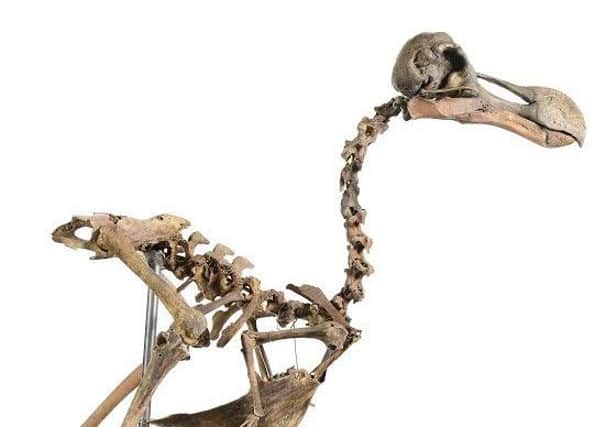COUNTY NEWS: Amazing rare Dodo is put up for sale


The Dodo, a 95 per cent complete composite skeleton, is the first to come up for sale since the early 20th century.
The rare flightless bird skeleton will go under the hammer at Summers Place Auctions in Billingshurst on November 22 and is expected to be sold for a six-figure sum.
Advertisement
Hide AdAdvertisement
Hide AdOnly one Dodo skeleton exists that is made up from the bones of a single animal. The others - and there are only a dozen that are relatively complete - are composites made up from bones that belonged to several individuals.
Errol Fuller, Summers Place Auctions’ natural history curator said: “Dodo skeletons are extremely rare.”
It is currently owned by a private collector who has bought bones from private collections and auctions for decades.
He spent years adding to his collection which he started in the 1970s and it was only in the early 2000s that he realised he had enough bones to construct a skeleton. He then meticulously reassembled them to create as complete a specimen as possible.
Advertisement
Hide AdAdvertisement
Hide AdNow he has decided to part with his Dodo - and it is thought highly unlikely that another composite skeleton will ever come up for auction again.
Any newly discovered bones from the Mare aux Songes swamp in Mauritius - where the vast majority of Dodo bones were found in the 19th century – will not be for sale. The Mauritian Government has now banned all exports of Dodo bones.
The Dodo only lived on the island of Mauritius and was first seen by Dutch sailors in September 1598 and became extinct just 70 years later.
The Dodo skeleton will be sold as the latest in Summers Place Auctions ‘natural history’ sales. Auctioneer Rupert van der Werff said: “The rarity and completeness of this specimen cannot be over emphasised, and it provides a unique opportunity for an individual or an institution to own a specimen of this great icon of extinction.”